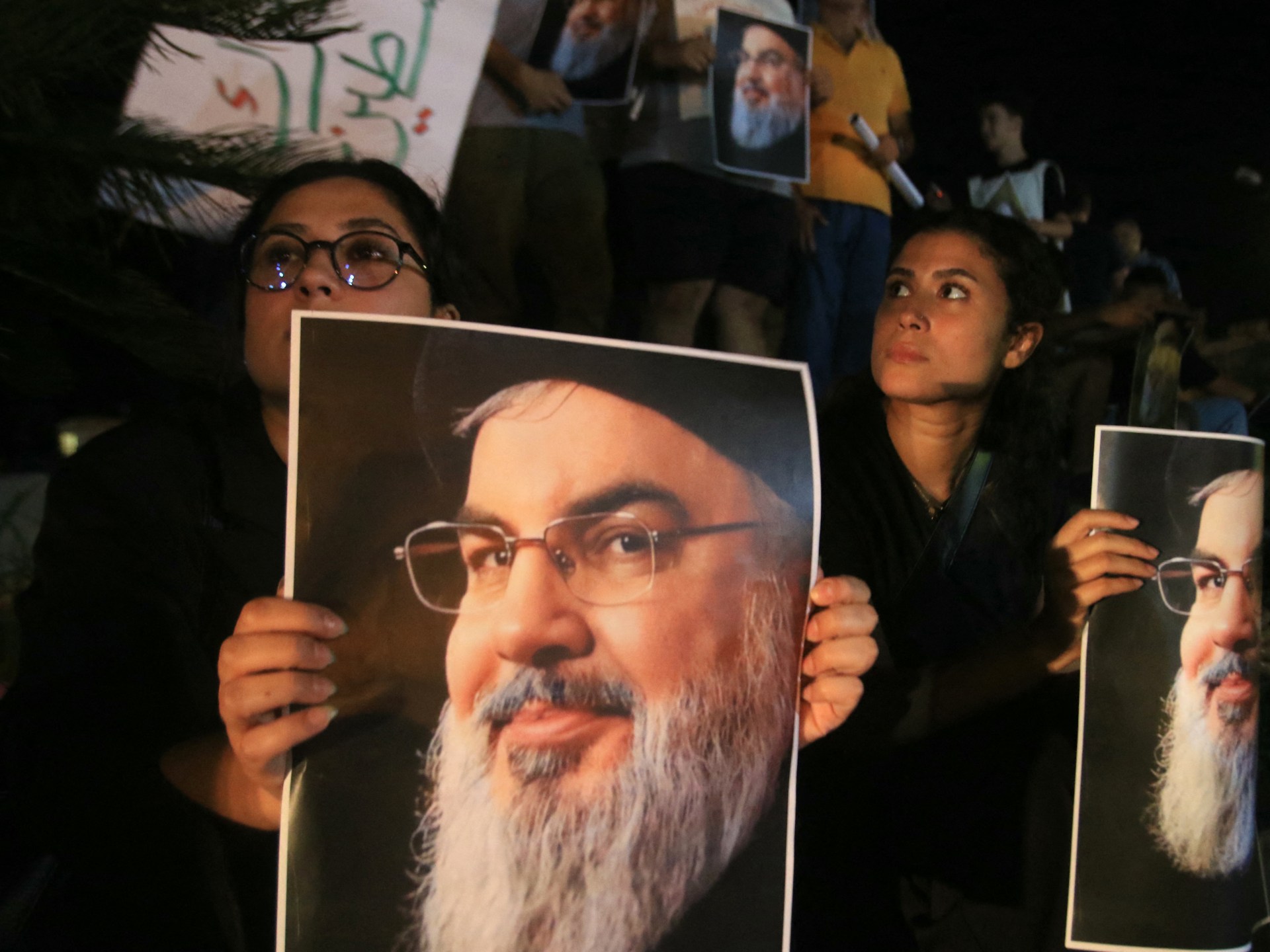After assassinating Hezbollah secretary-general Hassan Nasrallah in a devastating air strike on Beirut’s Dahiyeh neighbourhood, the Israeli army took to the platform X to boast triumphantly that Nasrallah would “no longer be able to terrorize the world”.
Granted, the objective observer would be forgiven for failing to detect how it is that Nasrallah is supposedly responsible for terrestrial terror when he is not the one who has been presiding over genocide in the Gaza Strip for nearly a year. Nor, obviously, is he the one who just killed more than 700 people in Lebanon in less than a week.
Israel takes the credit for all of that, just as it takes the credit for pulverising numerous residential buildings and their inhabitants in the quest to kill Nasrallah – as good an example as any of “terrorising the world”.
And while Israel is marketing Nasrallah’s elimination as a decisive blow to the organisation, a brief glance at history reveals that such killings unsurprisingly do nothing to root out resistance and instead intensify it.
Case in point: Abbas al-Musawi, Hezbollah’s co-founder and second secretary-general, was assassinated in 1992 in southern Lebanon by Israeli helicopter gunships, which also killed his wife and five-year-old son. On this occasion, too, Israel was quick to congratulate itself on its bloody feat – yet the celebration was woefully premature. Following al-Musawi’s assassination, Nasrallah was elected secretary-general and went on to turn Hezbollah into a formidable force not just in Lebanon, but throughout the region.
Under his leadership, Hezbollah expelled Israel from Lebanese territory in 2000, thereby putting an end to a brutal 22-year occupation, and successfully fought back during the 34-day war on Lebanon in 2006, dealing the Israeli military humiliating blows.
Meanwhile, Israel’s continuing obsession with killing Hezbollah figures did little to weaken the group. The 2008 joint Mossad-CIA assassination in Syria of Hezbollah military commander Imad Mughniyeh, for example, simply propelled the man to ever more mythical status in the Hezbollah Hall of Fame.
Then, of course, there are the myriad assassinations of Palestinian leaders going back decades – none of which have deterred the Palestinians from wanting to, you know, exist.
The Associated Press notes that several leaders of the Palestine Liberation Organisation (PLO) were killed in their Beirut apartments in 1973 by Israeli commandos “in a nighttime raid led by Ehud Barak, who later became Israel’s top army commander and prime minister”.
As per the AP report, Barak’s team “killed Kamal Adwan, who was in charge of PLO operations in the Israeli-occupied West Bank; Mohammed Youssef Najjar, a member of the PLO’s executive committee; and Kamal Nasser, a PLO spokesman and charismatic writer and poet”.
This took place one year after Ghassan Kanafani – respected Palestinian author, poet, and spokesperson for the Popular Front for the Liberation of Palestine (PFLP) – was assassinated by the Mossad in Beirut along with his 17-year-old niece.
These and other assassinations of prominent Palestinian figures hardly stifled the Palestinian resistance movement. As the first and second Intifadas demonstrated in the 1980s and 2000s, Palestinians can launch mass popular uprisings even without political or military leaders to organise them.
And as Israel endeavoured to violently rout traditional resistance groups, new ones emerged. This was the case with Hamas, which the Israeli occupation authorities in Gaza were only too happy to encourage in the beginning as a counterweight to the PLO.
Eventually, Hamas too found itself on the receiving end of Israel’s assassination strategy, which as usual failed to achieve its purported objectives.
In 1996, the Israelis killed Hamas engineer Yahya Ayyash by planting explosives in his mobile phone – a precursor, perhaps, to Israel’s recent terrorist undertaking in which it detonated pagers and other electronic devices across Lebanon.
Then there was the March 2004 assassination by helicopter strike in Gaza City of Sheikh Ahmed Yassin, a wheelchair-bound cleric and a founder of Hamas. His successor Abdel Aziz Rantisi was killed less than a month later in an Israeli air strike.
And yet despite enduring three apocalyptic wars in addition to regular Israeli military assaults and constant assassinations, Hamas managed to build enough capacity to carry out the October 7 attack on Israel.
Now, the July 2024 assassination of Hamas’s political chief Ismail Haniyeh – one of the main negotiators for a ceasefire deal in Gaza and regarded internationally as a “moderate” – has done nothing to diminish Palestinian resistance to genocide, but plenty to underscore Israel’s commitment to derailing any opportunity for a pause in mass killing.
As for Nasrallah’s demise, it bears reiterating that Hezbollah’s very existence is a result of Israel’s propensity for mass murder – specifically the 1982 Israeli invasion of Lebanon that killed tens of thousands of Lebanese and Palestinians.
The invasion, dubbed “Operation Peace for Galilee”, was ostensibly meant to stamp out anti-Israeli resistance in Lebanon but naturally only supercharged it.
The casus belli invoked to justify the operation was an assassination attempt against Shlomo Argov, the Israeli ambassador to the UK. Argov survived, a luxury that was not afforded the Lebanese and Palestinian casualties of “Peace for Galilee”.
If even an unsuccessful assassination attempt against an inconsequential diplomat has been known to provide Israel with a pretext for mass slaughter, it is a wonder that the Israeli administration does not stop and think about what sort of retaliation might be prompted by the actual assassination of a larger-than-life Arab icon – particularly against the backdrop of a relentless genocide of fellow Arabs.
Then again, laying the ground for perpetual and ever more psychopathic warfare is undoubtedly the whole point.
The views expressed in this article are the author’s own and do not necessarily reflect Al Jazeera’s editorial stance.




![Tyson Foods Plant [Photo: Food Manufacturing]](https://southarkansassun.com/wp-content/uploads/2023/08/iStock_1185520857__1_.5e441daa51cca-600x337.jpg)







![Silverado Senior Living Management Inc. [Photo: Los Angeles Times]](https://southarkansassun.com/wp-content/uploads/2023/10/download-6-4-600x337.jpg)

![China's Wuhan Institute of Virology [Photo: Nature]](https://southarkansassun.com/wp-content/uploads/2023/09/d41586-021-01529-3_19239608-600x337.jpg)
















